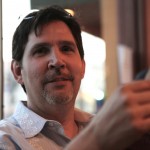by iStock Photo
Do you have trouble sleeping? Consider yourself not alone. Up to a 100 million Americans, and certainly millions more worldwide are struggling with chronic insomnia on a nightly basis.
With such a huge market of desperate people trying to sleep, and with such a poor reputation for results, it stands to reason that pharmaceutical firms have profited handsomely without providing much in the way of benefit to consumers. Starting with the barbiturates in the 60's and 70s, to benzodiazepine's like Valium and Xanax the 80's, drug companies have both profited and failed in their attempts at treating chronic insomnia.
Then came the the Z-drugs Ambien, Lunesta and Restril. What's strange about these drugs is that they were classified as non-benzodiazepines when approved by the FDA. According to the Wikipedia entry, "A survey of patients using nonbenzodiazepine Z drugs and benzodiazepine hypnotic users found that there was no difference in reports of adverse effects which were reported in over 41% of users and, in fact, Z drug users were more likely to report that they had tried to quit their hypnotic drug and were more likely to want to stop taking Z drugs than benzodiazepine users". This clearly suggests that the molecular compounds between the classification of these two drugs are remarkably similar. Is it possible that the drug companies used the same compounds and made slight alterations to the old benzodiazepines to create Z-drugs?
Both the old benzo's and the newer Z-drugs have a mechanism of action that targets the neurotransmitter GABA. This brain chemical is much like the ABS brake system on your car. The human brain is naturally wired to run faster than optimum, so GABA is vitally important in creating a balanced equilibrium. These drugs push this balance way over to the sedative side of the equation. There's a pseudo-relaxation response that numbs the pre-frontal cortex into submission. This area of the brain is important to all learning and the response these drugs have is that learning is greatly inhibited. People report feeling stupefied, disoriented and foggy even weeks after stopping their dosages.
There are, however, better ways of targeting GABA without the use of pharmaceuticals.
The key is to treat the anxiety and insomnia without drugs. The most efficient means to do this is through addressing the bio-electric aspects of the brain and central nervous system. The center-to-right region of the brain is responsible for producing an electrical frequency called sensory motor rhythm, also known as 12-15 hertz. This frequency range is what produces a sense of calmness and tranquility throughout the mind and body. Through heredity, (genetics) or from the accumulation of traumas, the brain somehow reduces this 12-15 hertz and the results can spiral into anxiety, panic attacks, and even in extreme cases, agoraphobia. Creating a negative feedback loop, this anxiety blows out sleep--and the lack of sleep increases the anxiety. The above mentioned drugs do nothing to address this 12-15 hertz deficiency.
Neurofeedback, also known as EEG biofeedback has shown to be effective at re-training the center/right of the brain to "re-start" the production of 12-15 hertz sensory motor rhythm. Two sensors are placed on the surface of the right scalp, delivering a real-time data stream of brainwave information to specially designed software. The software detects where the brain is out of balance, and then sends a series of instantaneous requests back to the brain through an audio/visual feedback system. The brain being a learning organ, will take the requests and start reproducing 12-15 htz again. And over time and a number of sessions, the brain will learn to produce the desired brainwaves on it's own, eliminating the need for long-term, on going treatment.
The end result it a sizable reduction of anxiety and a restoration of normal sleep cycles. Several scientific studies have been conducted using neurofeedback for insomnia. They can be found here.






